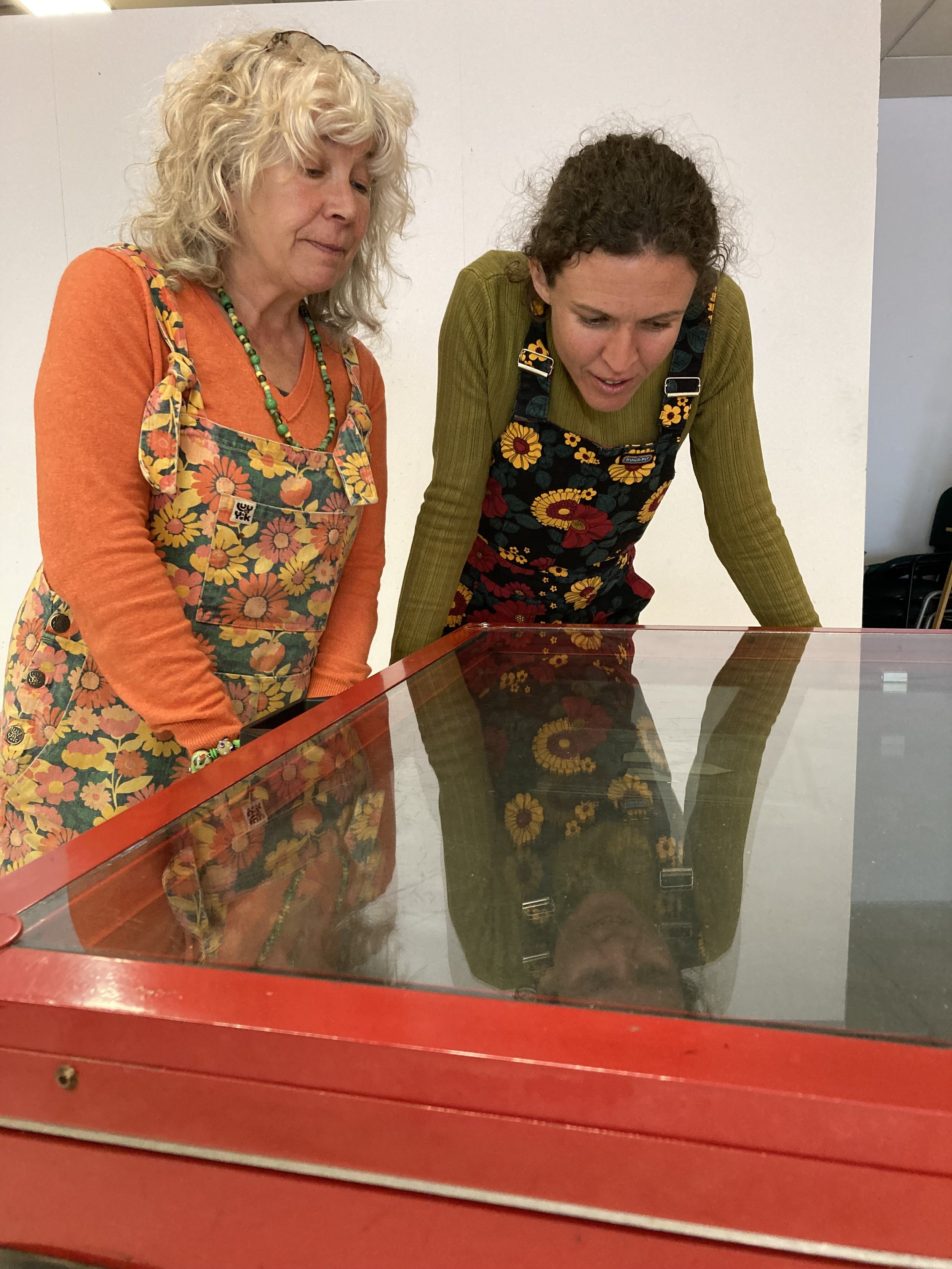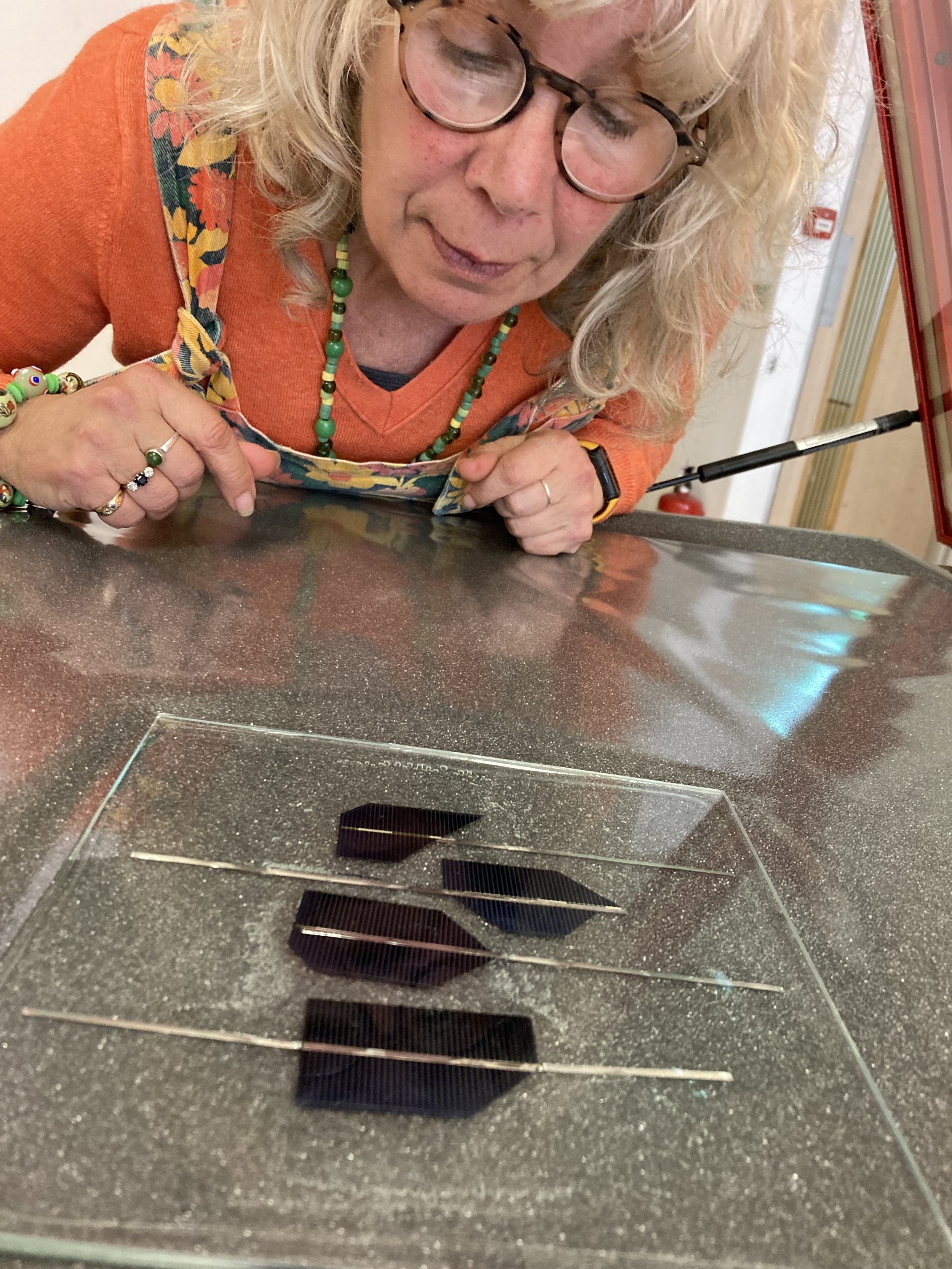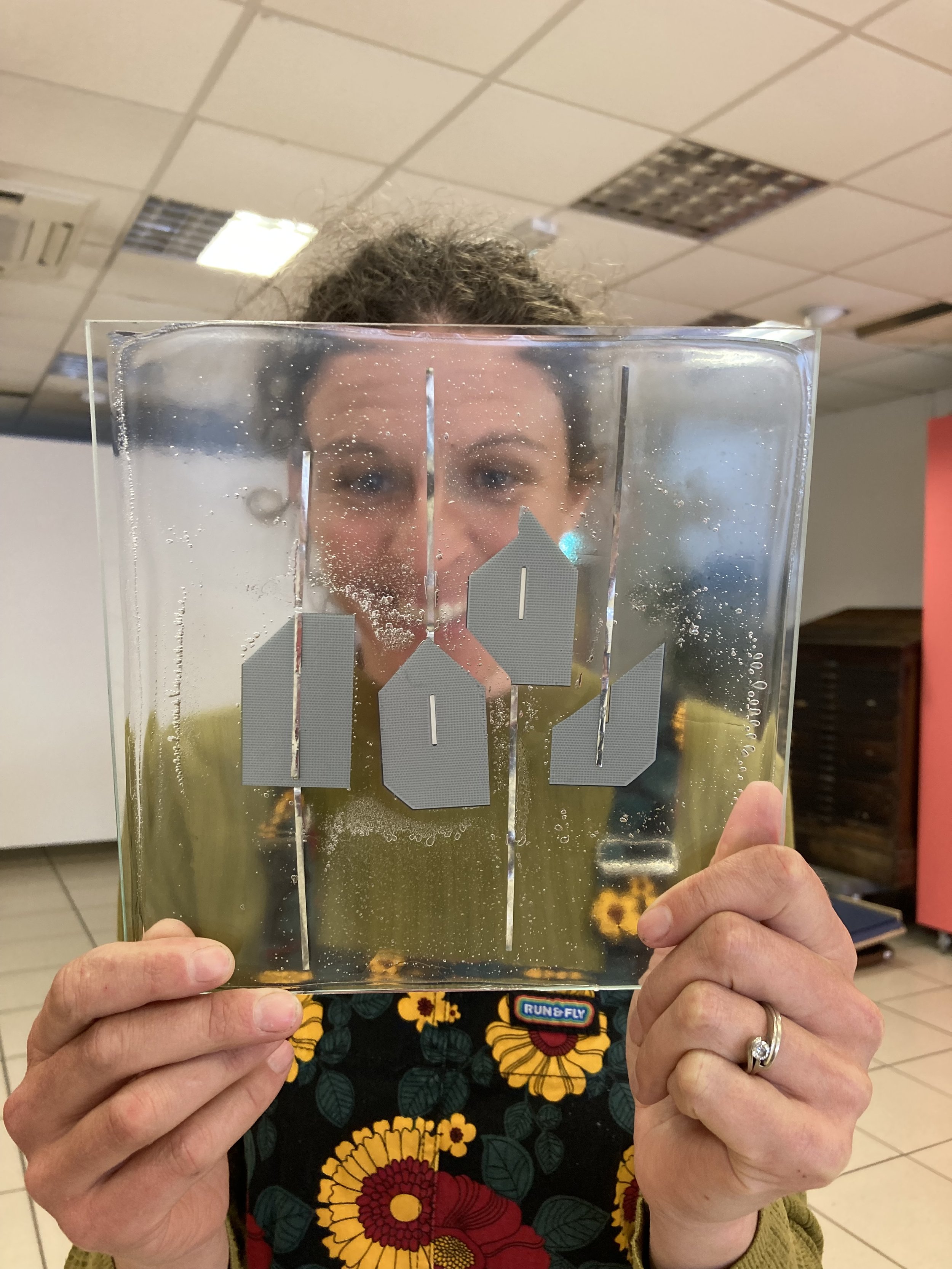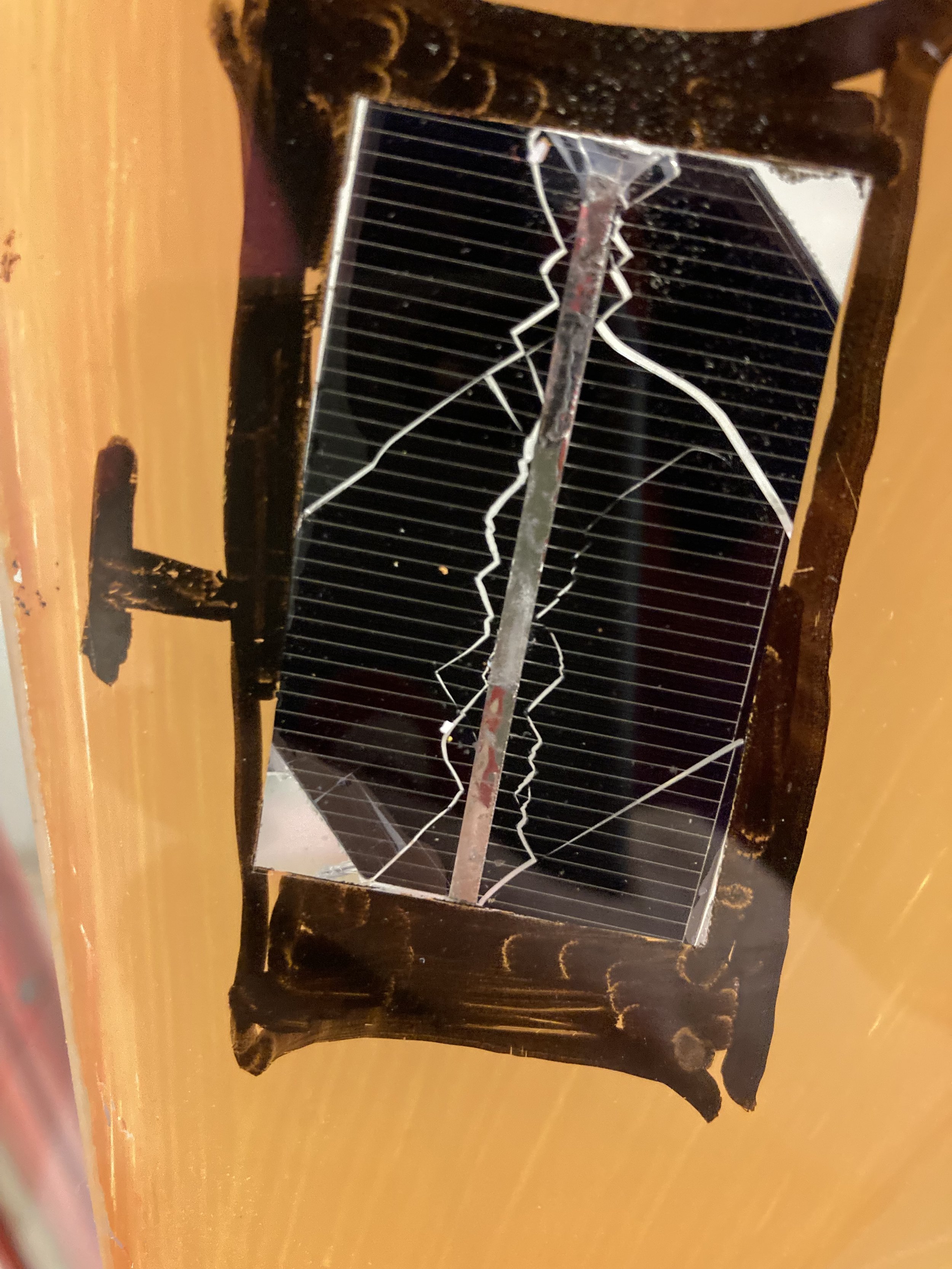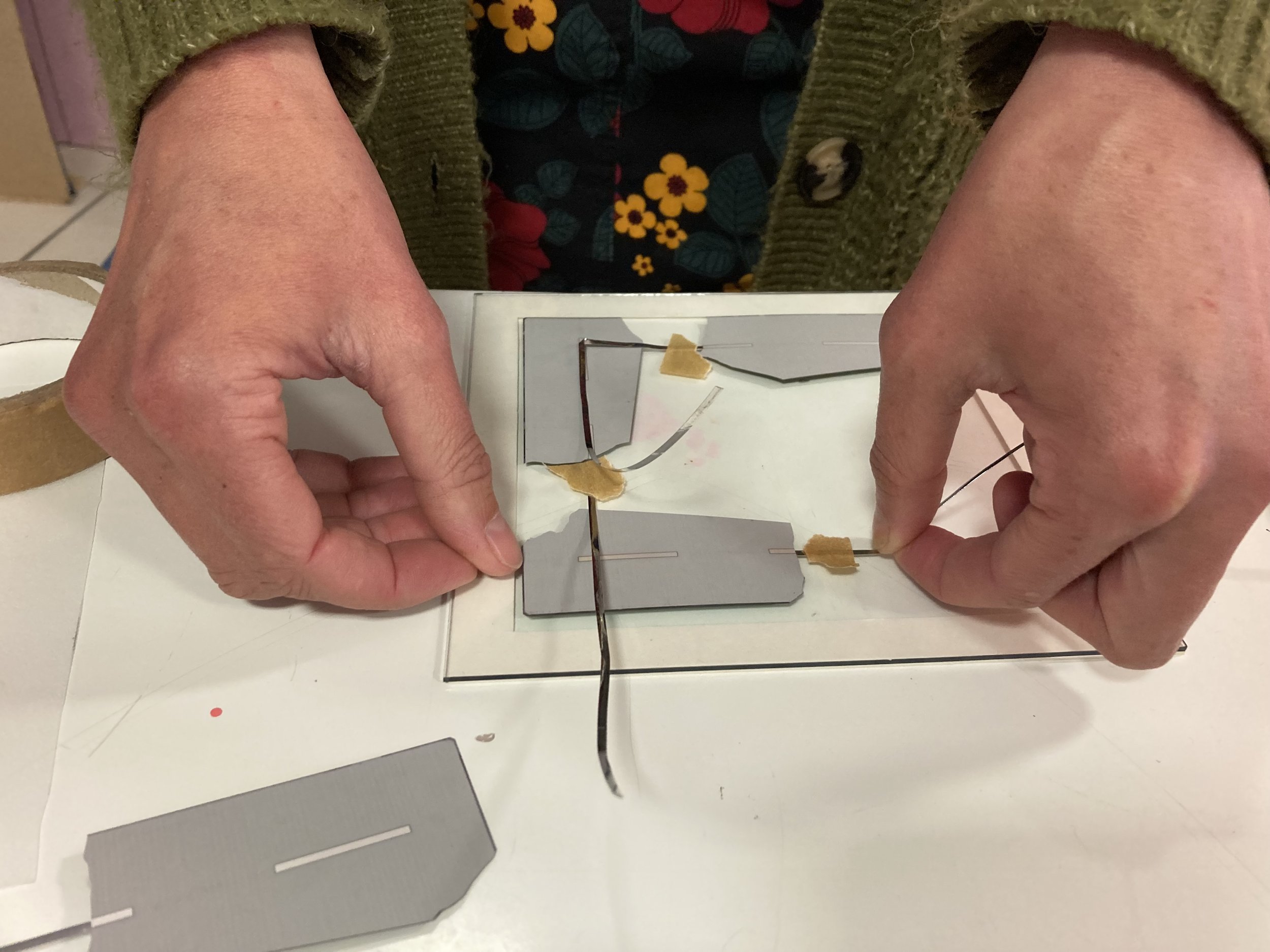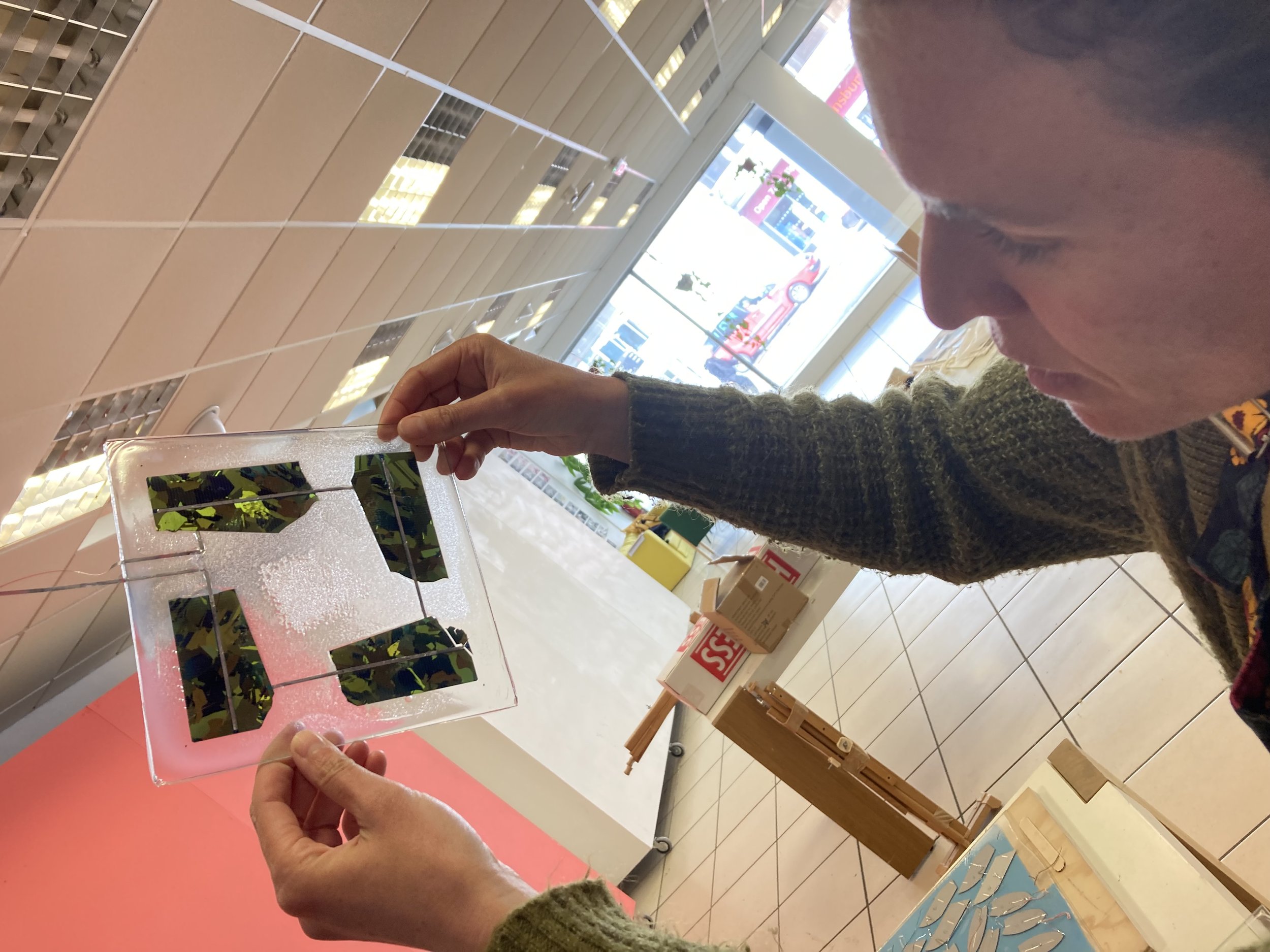Developing Solar Artworks - April update
In 2019 Art and Energy’s Chloe and Naomi created the UK’s first solar artworks - since then we’ve created more solar artworks, developed the making process, and had lots of interest from people who would like to make their own or purchase one from us… but we’ve hit some technical and logistical barriers to creating the fully functioning solar artworks that we aspire to. With support from the Arts Council England ‘Developing Your Creative Practice’ fund, Jenny’s been looking for solutions!
Solar laminator
In order to build durable long-lasting solar panels, manufacturers create a sort of sandwich of glass, glue and solar cells. These are ‘fully encapsulated’, sucking out any air and sealing it closed from the weather which would otherwise cause deterioration over time. Previously we’ve hired the use of a manufacturer’s encapsulator, but this is no longer available as they’ve moved overseas. We’ve been using a low tech solution heating with a hot air gun, but have noticed that this doesn’t seal fully, and traps air bubbles (some of which we enjoy aesthetically but are tricky to control!). We were determined to find a better solution!
We considered borrowing a big old encapsulator, or possibly building our own to a more manageable size… Jenny spent a lot of time online trying to find other less specialised kit that both sucked and heated… and eventually she stumbled across an old tabletop laminator on eBay… designed to be used in the print and framing industry. Significantly more affordable, a little less cumbersome for storage, but would it work for solar lamination?
Last week Naomi arrived with the laminator in the back of her car, we unloaded it at Positive Lights Projects plugged it in, and spent the next two days creating sample pieces and playing with the settings… the first very simple sample worked… the next few few were failures as the pressure on the solar cells caused breakages… for the next we tried using thin plywood strips to protect the solar cells resulting in the whole of Naomi’s glass sheet catastrophically cracking into a thousand pieces… but in doing so we had the idea to place the artwork the other way up, with the solar cells beneath the glass… and it worked!!!
Now we feel that we’ve worked out how to use the kit to technical success, we’re looking forward to further trials with more consideration of the aesthetics.

